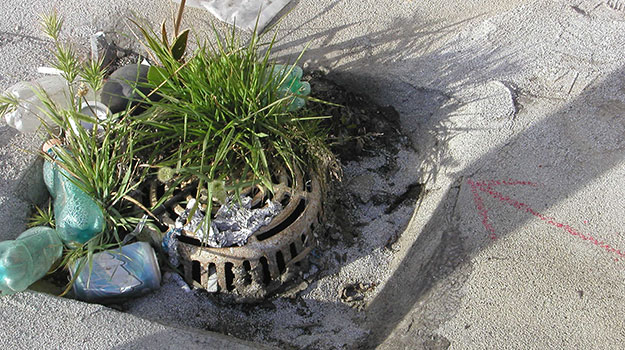Recent Repair Job Complete – Elgin, IL
1. Removed wet, damaged and deteriorated roofing
2. Removed deteriorated and damaged steel decking
3. Installed new steel decking
4. Installed new insulation
5. Torch applied new modified roof membrane
Hiring Roofers
We are currently looking to hire roofers and/or laborers. Please inquire by messaging, commenting or calling us at (815) 756-9700
How to Achieve Your Goals

5. Go backwards. It might sound weird, but I’ve found that working backwards can be highly beneficial. When I write down a goal, I then write down the ultimate end result that I am aiming for. Then I back into the starting point. It’s always easy to dream, but sometimes it’s not as easy to recognize all of the steps it will take to get there or what could go wrong. This is where working backwards helps me the most. Not only does it help me visualize an action plan, but it helps me identify obstacles that could deter our success early on. This is helpful for proactive planning, because I already have an idea of what can hinder the process and how to overcome it.
Source: Scott Jarred, Jarred Bunch
9 Ways to Make Sure You Accomplish Your New Year’s Resolutions

9. Give yourself something to look forward to. Your resolutions should produce things for you to look forward to. These should be rewards for the effort you’re putting in. Maybe it’s a vacation since you’ve exceeded your savings goal or a shopping spree for new clothes since you’ve lost weight. When you have things to look forward to – rewards for your hard work – you’re more likely to act in a way that ensures you will accomplish what you’re working toward. Plus, doing things for yourself is essential for happy human functioning.
3 Ways That Complaining Can Make You a More Negative Person

Research suggests that most people complain once a minute during a typical conversation. In fact, the same research suggests that we complain so much, most people don’t even know they’re doing it. Our brains don’t register it as complaining, but the negative side effects compound with every complaint.
It’s foolish to say that you can completely eliminate complaining from your life. But rather than falling victim to it on a regular basis, employ one or both of the above strategies to stifle the negativity.
Source: Scott Jarred, Jarred Bunch
What Do Clients Look For?

In the commercial/industrial roofing industry and in many cases, the residential housing market; customers evaluate different metrics or criterion that ultimately effect and lead them to their decision on who will install the new or replaced roof system in question and what type. After a study done through a series of interviews, “Roofing Contractor” -A publisher of The International Roofing Expo, determined that clients look for these things when determining the direction they should move with their roof replacement or repair:
- Obtaining a durable and long lasting roof
- Overall life cycle
- Install cost in overall performance
However, to even have the opportunity to get in the door and have a conversation with a “real” decision maker, it is important for a roofer to be able to network well enough and maintain positive relationships with past clients, businesses and local organizations, so that they can receive positive recommendations and reviews that will ultimately aide in the ‘warm’ connect.
What a roofing contractor needs to win a bid:
- Competitive pricing (however it’s not the most important!)
- Recommendations from various networks and businesses or individuals
- Listening skills to provide the correct selection of roofing need
- EXPERTISE & KNOWLEDGE of a multitude of roof systems, install methods, energy savings and other associated costs
- Strong partnerships or positive relationships with multiple suppliers and manufacturers
If a roofing contractor can show these different skills and provide the proper information when necessary, they can most definitely expect a higher return rate and wins on their proposals bid.
If looking for a great contractor in the Northern Illinois area, please reach out to us (Pinkston-Tadd, Inc.) for your commercial and industrial needs. (815) 756-9700 – Call today for a FREE survey and estimate.
We are a level 1 roofing contractor in the State of Illinois, fully licensed, bonded and insured. Approved to install all the major manufacturer products as well.
Other sources for this publication include: http://www.roofingcontractor.com/articles/91729-principia-study-a-closer-look-at-commercial-roofing
Recent Client Review


Recent Recommendation from a Satisfied Client:
When it was time for a new flat roof on our 25,000 sf production facility, out of 5 contractors who bid on our project, we decided to go with Pinkston-Tadd, Inc. mainly because unlike most contractors they did not try to push(sell) any specific type of roof or material, they gave us all available roof types and material options – explained in detail the advantages and disadvantages of each type of roof and material. Additionally, they had very competitive pricing and they were very professional, cooperative and addressed all of our concerns quickly and efficiently. They planned every detail from ordering the correct materials, color matching to our other building, hoisting everything necessary safely and with minimal disruptions to near by traffic, to correcting existing flaws with our roof penetrations, sky lights and even clean-up. Considering that the weather threw a couple of curve balls they finished the project couple of days ahead of schedule and on budget. In my 10 years in construction and 10 years in manufacturing environment I can easily say it’s not often that a construction project goes this smooth.
It’s been few months since they installed our roof and we are very happy with the work they did, they did it right the first time and did not have to come back even once.
I would definitely recommend Pinkston-Tadd, Inc. to anyone looking for a great roofing company.
Chris Klosek, Engineering
Marian Chicago, Inc.
How to Create More Productive Work Days – 12 Steps

It seems like everyone is always wishing for more hours in their day. Think about how often you’ve said something along the lines of, “If only there were 26 hours in the day, then I could get everything done.” Well, we can’t control how many hours are in a day or wish the day longer. Why is it then that some people seem to accomplish more than you do?
12. Leave work at work. There’s always going to be something that didn’t get done. But making work your life isn’t necessarily the healthiest, or most productive, strategy. Be content knowing that you used your time as efficiently as possible during the day, and accomplished your priority tasks. Then go home and enjoy time with your friends, family or doing things that you enjoy. Don’t check your email, don’t answer calls – unless you absolutely have to – and unplug.
Source: Scott Jarred, Jarred Consulting Group. Nov. 15, 2016
Protection from the Top: The Importance of Commercial Roof Cover Maintenance and Repair

The roof is a commercial building’s first line of defense from natural hazards such as wind, rain, fire, hail, ice, snow, and extreme heat. It is also the most vulnerable part of your building. Every day, your roof is exposed to weather and other elements that may contribute to decay and deterioration, increasing the risk of damage to the roof itself and the contents below it.
The International Building Code (IBC), which sets safety standards for commercial building, requires that roofs “serve to protect the building.” Having a roof that “protects the building” starts with design, materials selection, and installation at the time a facility is built or remodeled—events that occur infrequently and may be outside the scope of most businesses’ ongoing activity. But it also includes a regular program of inspection, maintenance, and repair—activities that should be part of your operational planning in order to prolong the useful life of your roof and make sure it does its job in protecting your business from weather damage.
This article focuses on how to identify and address common trouble spots in order to stop problems before they start and fix them before it’s too late.
RECOGNIZING THE SIGNS OF A ROOF PROBLEM
If it’s been a while since you’ve had your roof inspected, your first priority should be to identify and fix any major problems.
Signs of serious problems may be apparent even from inside the building. Water stains on a ceiling may signal a leak, which can be caused by a crack or hole in the roof. It’s important to understand that even the smallest leak can be a sign of big trouble. Similarly, if the building has unexplained mold or odors inside, this may indicate a roof leak resulting in water penetration. While internal water damage or mold may signal trouble above, it’s also important to visually inspect the roof itself to look for problems that are likely to worsen over time.
Depending on the slope of the roof and the ease of access, inspections sometimes can be done by the building owner, but in many cases, it makes sense to hire a contractor to make sure the job is done safely and correctly. Even if you are hiring a professional, reviewing the problems identified in this article may help you to understand the significance of what he or she has identified and the need for action.
WHAT TO LOOK FOR ON THE ROOF—SOME VISUAL CLUES
Prolonged standing water (see below) or ponding on the roof can lead to premature aging and deterioration of the cover, which will lead to leaks. Leaks that go undetected can slowly rust steel roof decks, rot wood decks, and turn light weight insulating concrete and gypsum decks into a thick paste like substance. Additionally, excessive standing water can lead to significant additional weight, which can weaken the roof deck.
Bubbles (see below) may indicate trapped moisture within the roof cover, which can lead to leaks, reduce the life span of the cover, speed up premature aging of the deck, and reduce the roof cover system’s effectiveness against uplift forces associated with a windstorm. Another cause of bubbles is the release of gasses from insulation board that gets trapped below the cover. A roof cut or moisture survey of the roof cover (See IBHS’ “Repair, Recover, or Replace the Roof”) can be completed to assist in the diagnosis.
Roof flashing is the strips of metal or other impervious material installed around the perimeter of the roof edge where the roof cover meets the wall. It is also installed around objects (such as rooftop equipment) that protrude from the roof in order to deflect water away from seams and joints. However, a gap in the flashing or roof cover perimeter (see below) greatly increases the potential for roof cover failure during a high wind event and water intrusion or mold. For further information including flashing repairs and replacement guidance, please see IBHS’ resources for “Evaluating Coping and Flashing.”
Tears in the roof cover (see below), or worn or cracking seams, can allow water to enter below the cover.
ADDITIONAL AREAS FOR INSPECTION
If there is a lightning protection system (see below), check to see if it is loose or detached as shown below. This can lead to a tear or puncture in the roof covering, especially during strong winds. A lightning protection system that has disconnected metal cables or aerials is no longer capable of providing the intended protection for the building’s occupants.
If there are skylights (see below), they should be checked for securement. Skylights that are not well sealed and secured around the frame’s edge can leak, which may cause the skylights to become dislodged and allow for wind driven rain and debris to enter the building, especially during a high wind event.
Also, over time the plastic domed panels can become brittle and very susceptible to cracks.
CARE AND MAINTENANCE
The best way to avoid roof-related problems and strengthen weather resistance is through regular care and preventive maintenance. Proper maintenance also prolongs the life of a roof and in many instances will allow for “repair” instead of “replacement” when a problem is identified. The frequency of inspections for routine maintenance depends on several factors, including the age of the roof, recent weather events, rooftop foot traffic, and conditions identified during previous inspections. That said, scheduling inspections every 6 months (fall and spring) is an effective way to make sure they are not sidetracked by the press of other important business.
Here are some things to keep in mind:
- All inspections should look for and develop a repair plan for the items that indicate signs of problems described above.
- After a severe windstorm or hurricane, inspect your roof for damage, as repeated storms can reduce the strength of the roof. Even if the roof survived a storm, it may have been damaged or weakened enough to fail during the next storm, or the one after that.
- Inspections should look for signs of previous leaks or other problems to make sure that repairs have stayed intact.
- Remove any loose objects and accumulated debris. A clean roof eliminates leaves and other materials that have a tendency to hold moisture, which can speed up the deterioration of the roofing materials. In dry areas, keeping the roof clear of debris reduces the risk that embers from a wildfire will ignite the roof.
- Keep trees trimmed. This prevents branches from rubbing against the roof and leaves from accumulating on the roof and clogging drains and gutters.
- Check gutters and downspouts for leaves, twigs and other debris that will inhibit proper drainage.
- If located in a hurricane prone area, check if the gutters include gutter straps designed to resist uplift.
- Inspect rooftop vents and equipment to make sure they are well sealed. Seal any gaps with flashing cement. Replacement may be necessary if the metal flashing is badly deteriorated, or if vents can wiggle back and forth.
- After a hail event with hail stones larger than ¾ inch, contact your insurer and have the roof inspected even if you are not aware of any damage.
- Consulting a professional roofing contractor may be helpful if concerns exist after a maintenance review of the roof. The contractor can also help to determine the health of the roof, estimate the remaining life of the roof, help you develop a maintenance plan, and identify additional steps to protect the roof.
The following are some things to consider when hiring a roofing contractor:
- Look for established, licensed or bonded professionals.
- Obtain several bids for services.
- Ask for and check references that specifically include other commercial buildings in your area.
- Ask to see certificates of insurance. Make sure that coverage for liability and workers’ compensation insurance is current.
- Contact your local Better Business Bureau to check for complaints filed against the inspector.
- Make sure the bid clearly defines the work that will be done, including hauling away of debris and grounds cleanup.
- If your new roof is being installed on an existing building, make sure that the deck is checked out for water soaked or deteriorated material; have damaged material replaced as part of the contract.
- Discuss, verify, and receive in writing the warranty information. Confirm what is and what is not covered. Keep copies of all warranties and a record of work performed to assist in future inspections, maintenance, and repairs.
A properly maintained roof is necessary to protect your building and the business conducted within it. Remember that a little maintenance can result in a lot of savings, especially when compared to the cost of damage from a small, undetected leak or a catastrophic roof failure. DOWNLOAD the article here.
Source: Insurance Institute for Business & Home Safety. https://disastersafety.org/ibhs-news-releases/protection-from-the-top-the-importance-of-commercial-roof-cover-maintenance-and-repair-3/
TOP 10 COMMERCIAL/INDUSTRIAL ROOF PROBLEMS

Unforeseen roofing issues can have a huge impact upon your business and can cost you a significant amount of money and time.
One of the most discussed topics on our website is proactive preventative measures, simply because this is the best course of action for professional commercial organisations.
In this article I have included the 10 most common industrial roofing problems to look out for and what you can do to prevent them.
Understanding the impact that these industrial roofing problems may have on your roof, and how to avoid them, could save you a lot of money, time, and minimise any downtime due to inaccessibility.
Top 10 most common industrial roofing problems
1 – Poor maintenance
Poor maintenance is possibly the most common topic we discuss on our website, and that’s because it’s the main source of problems for industrial and commercial roofs. The most frustrating aspect of poor maintenance is that it’s really simple to put preventative measures in place.
As far as we are concerned there aren’t any really good excuses for poor maintenance, especially when industrial roofing contractors just like us offer planned preventative maintenance programs.
2 – Winter & extreme weather
Unfortunately there’s not a lot you can do to prevent the winter and extreme weather. However, there are things you can do to minimize the impact these conditions will have on your roof.
In summary, the main conditions you will want to keep an eye out for are:
- Extreme temperature changes – this can result in melting ice and snow, which in turn creates a lot of water, which can lead to water ingress and overflowing guttering
- Extreme wind – can result in loosening of roofing materials and collection of debris, leading to leakages and overflowing guttering
- Heavy rain and snow – if your roof is already in a poor state of maintenance heavy rain and snow fall can lead to severe water ingress
The key to preventing problems and preparing for the winter is to organise regular roof inspections to ensure your roof can deal with the most extreme circumstances. It is also important to make sure that visual checks take place immediately after extreme weather conditions.
3 – Lack of gutter cleaning
As with most gutter and roofing problems that we come across it’s quite easy to prevent them with roof inspections and planned preventative maintenance. However, most people don’t fix things until they are broken or until there is no other option.
Throughout the year, and especially in the winter time, your gutters become a source of concern for roofing maintenance. The wind, rain and extreme weather conditions result in leaves, branches, stones, dirt and debris being washed into your guttering, which will block and choke your gutters.
The best course of action is regular cleaning and inspection of your guttering. However, over time as your gutters go unchecked with a lack of ongoing maintenance, instead of a simple clean and inspection you can expect more relatively expensive repairs and in extreme cases a full gutter replacement.
4 – Leaks and water ingress
Water leakage is a very strong indicator of a need for roof replacement or repair. Generally, water leakage and damp areas within the roofing area are caused by missing or damaged roofing materials. On the ceilings and walls look out for damps spots and discolouring, which is likely to be early signs of water ingress and is usually a result of a roofing issue.
As soon as this is spotted it’s absolutely critical to contact your industrial roofing contractor.
5 – Seagulls and birds
For commercial property owners and tenants, seagulls can be a headache, causing many challenges and problems including:
- Picking at roofing materials
- Debris from nesting including sticks and branches
- Noise
- Swooping
- A mess from droppings
Their nests and debris can also restrict the flow of water on your roof causing overflow issues and increase risk of water ingress.
If your property is prone to attracting seagulls, the key is to prevent seagulls landing on your roof all together.
6 – Asbestos
As the concern for asbestos roofing increases it’s ever more important to ensure that you know what you are dealing with. As soon as asbestos is mentioned it usually strikes fear into people due to the known extreme health dangers associated with it.
If you think asbestos containing materials are present, but you don’t have a record of the location, the best course of action is to arrange a roof survey and inspection.
If you are unsure about anything it’s important to not disturb your roof and get professional help.
7 – Standing or ponding water
Ponds of water on your roof can be a sign of a build up of debris or an indication that the drainage is inadequate or blocked.
Left without inspection this can lead to water ingress and gutter overflowing.
8 – Poor installation and workmanship
One of the issues we come across quite frequently is where a previous contractor has attempted to repair a job but it has been performed incorrectly.
Unfortunately this can result in a full roof replacement and even more expense and upset for you and your business.
9 – Damaged rooflights
When we are called out for a commercial or industrial roofing issue the problem is typically due to defective and damaged rooflights.
Although the estimated tenure of a rooflight is 20-30 years, they become fragile between 15-20 years. This is mainly due to the UV light attacking the outer layer of the roof light.
Perhaps not surprisingly, the main reason rooflights don’t last as long as they should is because a regular maintenance and inspection programme is not in place.
Look out for:
- Discoloring
- Brittleness and tearing
- Loose fittings and fixtures
- Water ingress
10 – Build up of debris
Over time due to wind, rain and nesting birds debris will collect on your roof. This may include leaves, sticks, branches and small stones.
As this collects and builds up on your roof it can lead to the restriction of the flow of water.
Clearing your roof of dirt and debris will ensure the proper draining of water.
The all-in-one solution: Preventative maintenance
If you’ve read this far there should be no doubt in your mind that the recommended method of prevention is found in taking proactive preventative measures. This could be in the form of scheduled roofing inspections and/or a full planned preventative maintenance programme.
A proactive approach to roofing maintenance can save you money, time and reduce the risk of a premature roof replacement.
Source: Jamie Morton, Industrial Roofing Scotland












